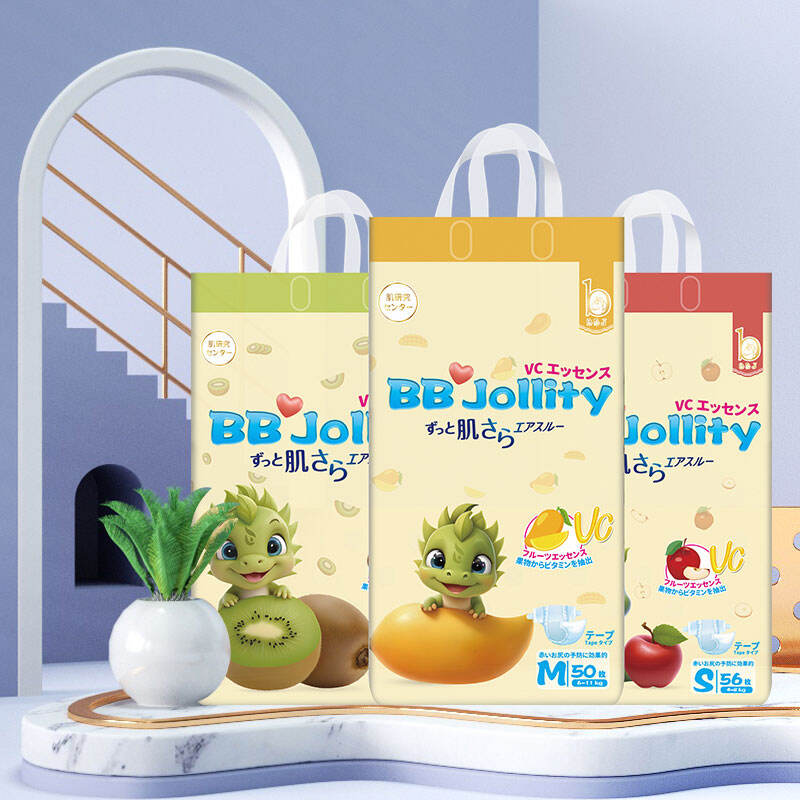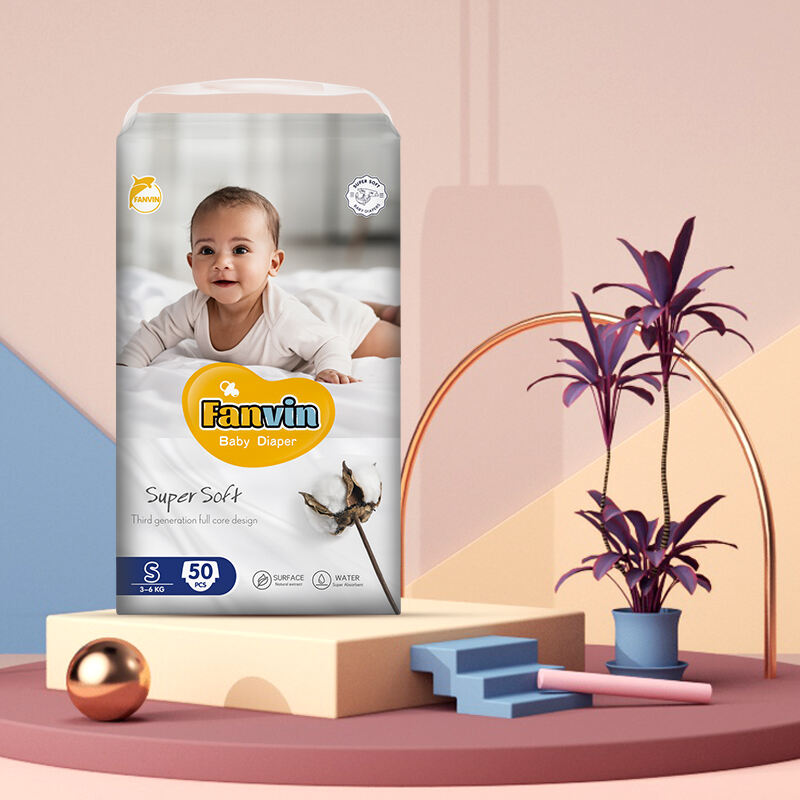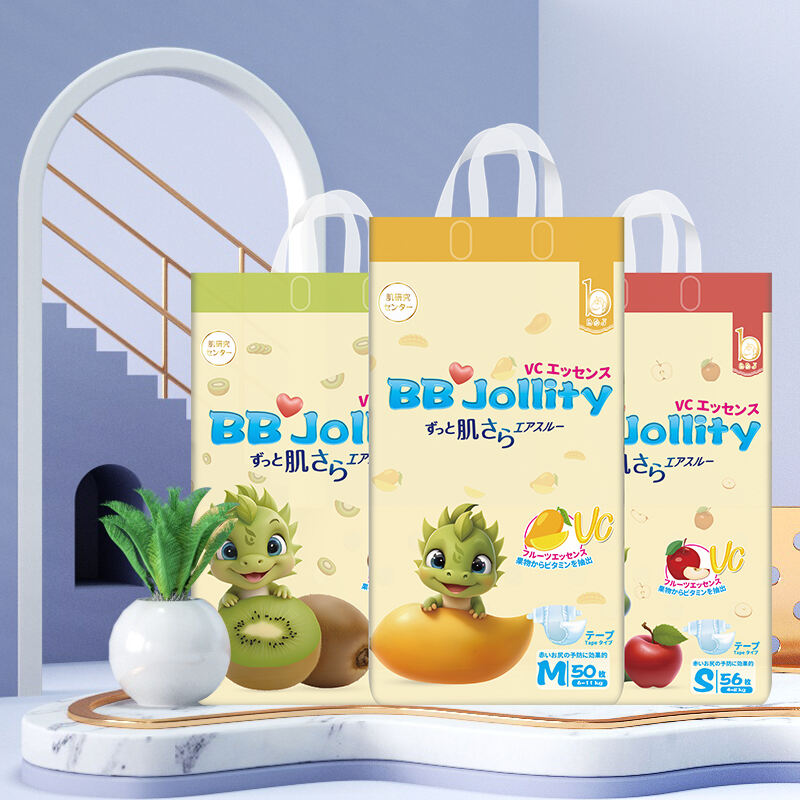Struggling with Baby Diaper Rash? Pick the Right Diaper for Prevention!
Understanding Baby Diaper Rash: Causes and Symptoms
Common Causes of Skin Irritation
Moisture buildup over time tends to be the main reason behind diaper rashes, as it irritates delicate skin areas. Leaving a wet diaper on for extended periods creates these conditions where bacteria and fungus start growing, eventually causing those annoying red patches. Friction from the diaper rubbing against tender skin makes things worse too, often leaving babies uncomfortable and crying from the redness they feel. Some little ones actually react badly to certain types of diapers or wipes, which can trigger rashes without warning. Parents sometimes notice this happens after switching brands unexpectedly. Starting solids or introducing new foods can also play a role since stools change texture and become more irritating to sensitive skin. Warm weather, high humidity levels, and not changing diapers regularly enough all contribute to making diaper rash problems worse than they need to be.
Recognizing Early Warning Signs
Spotting the early warning signs of diaper rash helps stop things from getting worse down the road. Most of the time, red patches and some irritation around where the diaper sits are usually the first clues something's up. Watch closely for any spots that look different colored, especially those tucked away in skin creases since these might point to a rash starting to form. Little ones tend to give off signals too when they're uncomfortable - think fussiness or outright crying whenever someone tries changing their diaper. Keep an eye on how babies react generally throughout the day. If they seem extra sensitive to being touched somewhere near their bottom area, this could mean action is needed soon. Regular checks of the diaper region let caregivers notice problems before they become serious issues, which means better chances for healthy skin overall without having to deal with more complicated treatments later on.
Key Features of Rash-Preventing Diapers
Breathability and Moisture Control
Breathable diapers really matter when it comes to stopping diaper rash because they let air move around better, which means less moisture builds up on baby's skin where it causes irritation. The materials in good quality diapers pull wetness away from sensitive areas so babies stay drier for longer periods. Research shows that parents who switch to more breathable options notice fewer cases of redness and discomfort in their little ones. These modern diapers do a much better job at managing moisture overall, keeping skin healthier and reducing those annoying irritations that lead to infections down the road. What makes them worth the investment? Besides being more comfortable for the baby wearing them, breathable fabrics actually help protect against common skin problems that can develop if moisture stays trapped against delicate skin for too long.
Hypoallergenic Material Considerations
Choosing diapers that contain hypoallergenic materials helps reduce the risk of allergic reactions and diaper rashes, especially important for babies with sensitive skin. Parents should look for options without added dyes, artificial fragrances, or strong chemicals since these additives frequently irritate delicate skin. Most good quality hypoallergenic brands actually get tested by dermatologists to ensure they're safe for little ones. When parents pick these kinds of products, they generally see fewer rash problems, which matters a lot for kids who tend to react easily to things on their skin. Talking to a pediatrician about what works best for different skin types makes sense too, as doctors often have firsthand experience with what materials work well in practice.
Proper Fit for Reduced Friction
Getting the right fit with diapers really matters because tight ones cause chafing and friction which leads to irritated skin. When diapers are too tight around the legs or waist area, they block air circulation and hold in wetness, making diaper rash much worse. Going for adjustable sizes helps since babies grow so fast these days, and it keeps them comfortable over time. Different brands work better for different little ones too, especially those who are always moving around. Parents need to keep checking how the diaper fits as their child develops, making sure it stays secure without being too tight. This simple habit ensures maximum comfort while cutting down on chances of getting red bottom syndrome.
Top Diaper Choices for Sensitive Skin
Baby Jollity Diaper Type: Skin-Friendly Protection
Baby Jollity stands out when it comes to keeping delicate baby skin protected. These diapers use really soft materials that help avoid irritation for babies with sensitive skin, which is why so many parents reach for them again and again. The product also handles moisture well while letting air circulate, which helps keep baby's bottom healthy and cuts down on rashes. Parents who have tried them often talk about how their little ones' skin stays intact even after long days. Pediatricians tend to suggest Baby Jollity for kids with sensitive skin too. There are plenty of different sizes to choose from, so as babies grow and change, parents can find the right fit that stays comfortable all day long.
Hiisoft Ultra Absorbency Diapers
Hiisoft diapers stand out because they soak up a lot of liquid, which keeps babies' bottoms dry throughout the day. Parents often mention that even after multiple feedings, their little ones stay comfortable without any discomfort. A lot of families notice fewer instances of redness and irritation since switching to Hiisoft, something many credit to the clever way these diapers are put together. Available in several sizes means finding the right fit isn't just possible but actually quite easy, making those long nights a bit more bearable for everyone involved. Doctors have run tests showing these products work well for delicate skin types too. Most parents who've tried them keep coming back, especially those dealing with babies who tend to get easily irritated by regular diaper brands.
Breathable Tape-Style Options
Tape style diapers are pretty popular among parents who want something convenient but also good for baby's skin. The designs let air circulate properly, which helps keep little ones dry and reduces those annoying rashes caused by wetness. Most parents love how fast they can put these on, especially when changing multiple times a day during busy mornings or late night feedings. Manufacturers have been focusing more on breathable fabrics lately, so these diapers fit right into what many families are looking for nowadays regarding skin health. Lots of moms and dads report their kids actually seem more comfortable in these compared to other styles, making them a top pick for babies with delicate skin that gets irritated easily.
Daily Prevention and Care Strategies
Optimal Diaper Changing Routines
Changing diapers regularly and strategically helps keep baby's skin dry and prevents irritation from sitting in moisture. Most experts recommend changing them about every two to three hours, though this can vary depending on how active the little one is. Checking often for wetness makes sense because catching it early stops minor issues from turning into full blown rashes later. Parents might want to build a habit around meal times since babies tend to go right after eating or drinking something. Having a specific spot set aside just for diaper changes works wonders for keeping things organized and safe during those quick changes. Keep extra diapers, wipes, and some barrier cream within reach so nobody has to run around looking for stuff when baby needs a fresh change. These simple habits make a real difference in protecting delicate skin and generally lead to happier, healthier diaper days all around.
Combining Barrier Creams with Quality Diapers
Combining barrier creams with good quality diapers remains one of the top methods parents can use to keep diaper rash at bay. These barrier creams form a sort of shield against wetness and stuff that might irritate baby skin, which helps cut down on those red, sore patches. Many caregivers swear by zinc oxide based products since they offer extra protection beyond just regular cream. Applying them properly matters too - focus on spots where friction happens most during diaper changes. When paired with decent diapers that wick away moisture well, this combo works wonders for keeping little ones comfortable. Most pediatricians recommend going this route because it tackles two problems at once: managing moisture while protecting delicate skin surfaces. Getting into a routine where these products become part of everyday diaper care makes all the difference in maintaining healthy skin over time.
When to Consult a Pediatrician
Persistent Rash Despite Prevention
If a baby still has diaper rash after trying all the usual prevention methods, parents should probably see a doctor. Rashes that hang around longer than about three days often point to something deeper going on that needs professional help. Keeping track of how long the rash lasts and how it changes over time helps doctors figure out what's really happening. Sometimes these stubborn rashes mean the baby is allergic to certain diapers, so switching brands or types might actually solve the problem. Putting off getting medical advice when symptoms keep coming back can create bigger problems down the road. Getting prompt help from a pediatrician makes sense not just for finding out what's wrong, but also for making sure babies stay comfortable and healthy during this whole process.
Signs of Infection or Allergic Reaction
Parents should reach out to their child's doctor when they notice concerning signs of infection or possible allergic reactions. Swelling around the affected area, painful blisters forming, or any discharge containing pus usually means something serious going on beneath the surface that requires quick attention from a medical professional. When basic home care steps don't seem to help and things actually get worse over time, getting expert opinion becomes really important for everyone's peace of mind. Keep an eye on how babies behave too because sudden changes might point toward allergies from everyday items such as certain brands of diapers or baby wipes. Writing down extra details matters quite a bit too. Fever spikes or when little ones become unusually fussy without explanation can give doctors valuable clues during diagnosis. If there's even a hint of infection developing or anything looks particularly bad after checking online resources, calling the pediatrician within a day makes sense rather than waiting longer and risking complications down the road.





